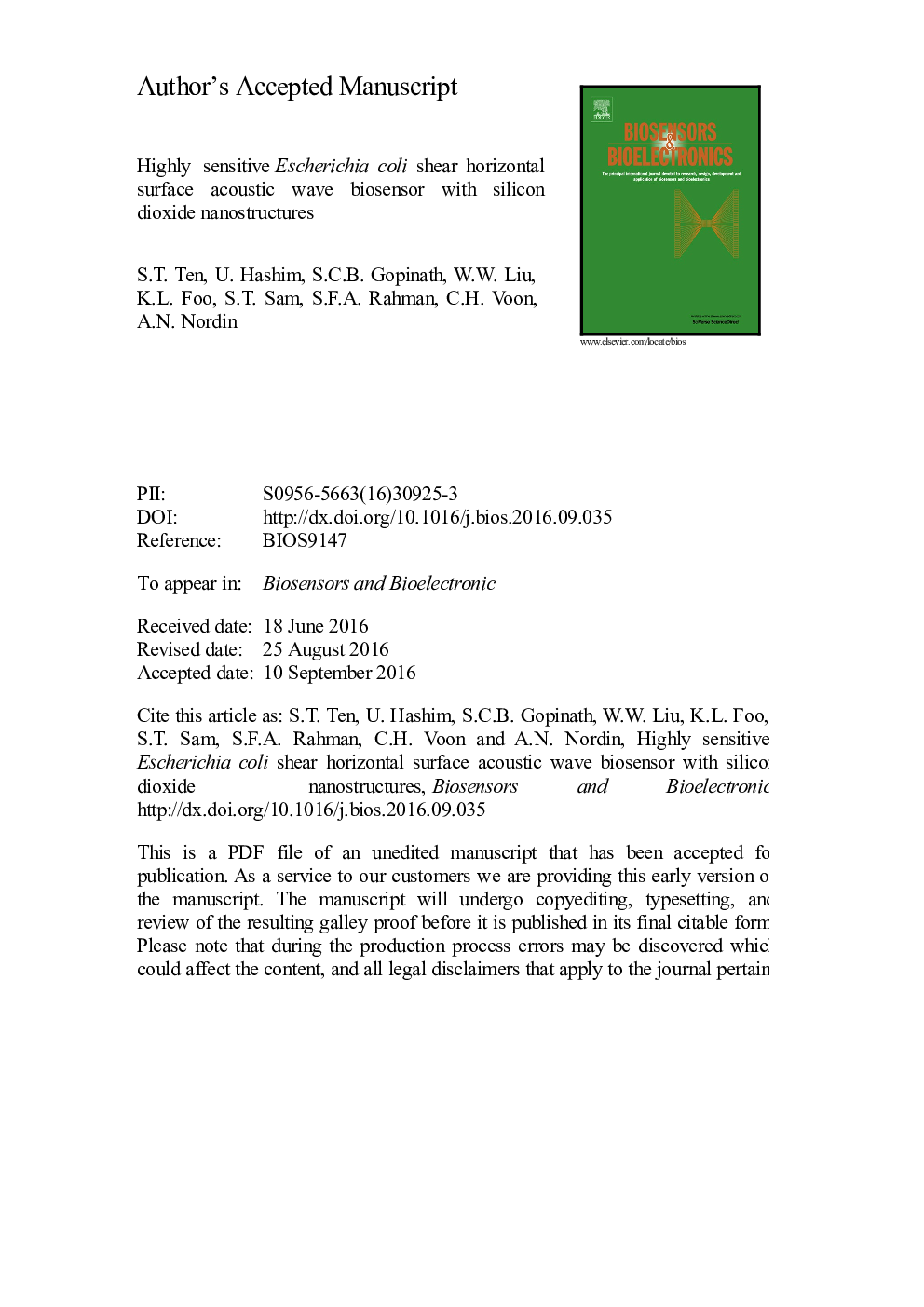| Article ID | Journal | Published Year | Pages | File Type |
|---|---|---|---|---|
| 5031535 | Biosensors and Bioelectronics | 2017 | 23 Pages |
Abstract
Surface acoustic wave mediated transductions have been widely used in the sensors and actuators applications. In this study, a shear horizontal surface acoustic wave (SHSAW) was used for the detection of food pathogenic Escherichia coli O157:H7 (E.coli O157:H7), a dangerous strain among 225 E. coli unique serotypes. A few cells of this bacterium are able to cause young children to be most vulnerable to serious complications. Presence of higher than 1 cfu E.coli O157:H7 in 25 g of food has been considered as a dangerous level. The SHSAW biosensor was fabricated on 64° YX LiNbO3 substrate. Its sensitivity was enhanced by depositing 130.5 nm thin layer of SiO2 nanostructures with particle size lesser than 70 nm. The nanostructures act both as a waveguide as well as a physical surface modification of the sensor prior to biomolecular immobilization. A specific DNA sequence from E. coli O157:H7 having 22 mers as an amine-terminated probe ssDNA was immobilized on the thin film sensing area through chemical functionalization [(CHO-(CH2)3-CHO) and APTES; NH2-(CH2)3-Si(OC2H5)3]. The high-performance of sensor was shown with the specific oligonucleotide target and attained the sensitivity of 0.6439 nM/0.1 kHz and detection limit was down to 1.8 femto-molar (1.8Ã10â15 M). Further evidence was provided by specificity analysis using single mismatched and complementary oligonucleotide sequences.
Related Topics
Physical Sciences and Engineering
Chemistry
Analytical Chemistry
Authors
S.T. Ten, U. Hashim, S.C.B. Gopinath, W.W. Liu, K.L. Foo, S.T. Sam, S.F.A. Rahman, C.H. Voon, A.N. Nordin,
